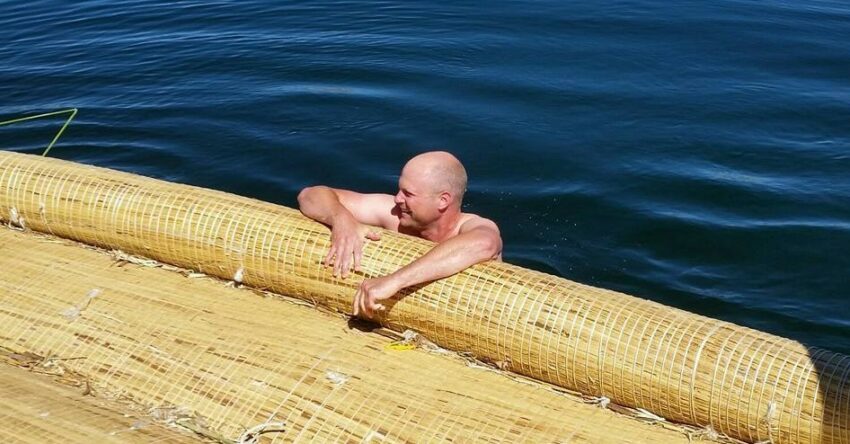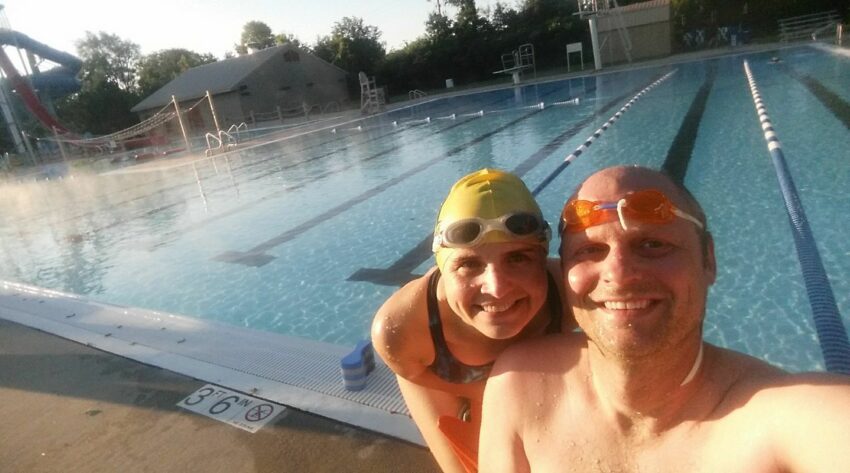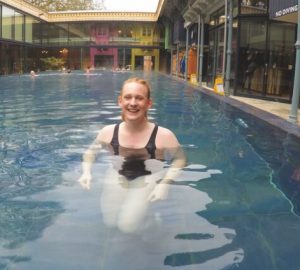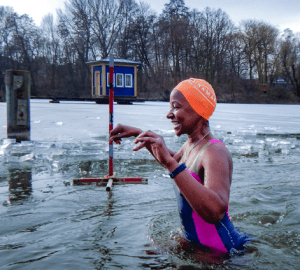How climate change threatens open water swimming – and what can we do about it?
Our sport is under threat from the greatest threat to humanity of our time: climate change and consequent extreme weather events. We’re already seeing the impact. A couple of years ago Bill Burke – the President and CEO of Premier Event Management who has overseen 900 running and multisport events in nearly four decades – said: “I’ve never seen so many cancelled or altered swims in such a short span of time”.
While I have long wondered when the effects from climate change to my everyday life would become apparent, last autumn I finally saw it. I received an email from one of my recruits apologising for not having communicated sooner due to her town being ravaged by a hurricane. She also apologised that she did not have updated race times to share because her pool had been shut down due to storm damage and thus her team was not competing as planned.
The email exchange showed me that even in times of crisis we are grasping for normalcy. Outdoor swimming can be solace for us as we deal with the stresses of future climate change impacts. But the truth is climate change is impacting us all now and the impacts are only likely to get worse without drastic changes from all of humanity, in particular those of means.
Sea levels have risen and are continuing to rise. In the last 50 years, sea levels have risen more than 4 inches around the globe. It is expected that there will be anywhere from 1-10 inches of sea level rise (depending on the model) every 10 years. Sea level rise is going to most significantly impact coastal areas, and coastal areas are where populations are most concentrated globally.

Tim Hammond is Associate Head Men’s & Women’s Swim and Dive Coach, Natatorium Coordinator and Director of Intramural Sports at Grinnell College. This picture was taken after a “frigid” swim in Lake Titicaca.
Long term, rising sea levels will pose an existential threat to coastal communities but long before that, expect to see swimming pools ever more frequently impacted by flooding and having contaminated water sources. We will also see many open water events cancelled due to contaminated water. Floods move faecal matter (both human and that from other animals) from the ground, sewers, and storage areas to bodies of water. Surface water contamination typically infects humans after extreme precipitation. Climate change is going to make extreme rainfall and flooding worse, increasing the likelihood of surface water being contaminated with waterborne illnesses. The quintessential example of this is the fifth consecutive cancellation of the Nation’s Triathlon swim, in Washington DC, due to the contamination of the Potomac River by heavy rainfall causing sewer overflows.
In the US, of special concern are winter storms. While the increase of heavy winter storms limits access to training and competition in the Midwest and Northeast, frequently in the western United States there has been a lack of sufficient precipitation. During extended droughts, we know that water access will eventually become a concern. As average temperatures increase, less precipitation will fall as snow, and snow will melt earlier, thus western US water management practices will be disrupted. Swimming is reliant on large volumes of clean water.
Last summer, on top of the Ironman UK biking distance being cut short in July due to the Winter Hill fire, we saw talk that the swim might be cancelled due to blue-green algae (or Cyanobacteria) levels. Then just weeks later the swim in Ironman Hamburg was cancelled due to blue-green algae. It is likely we are seeing algal blooms more frequently as waters warm. Blue-green algae grows faster in warm waters due to the reduced mixing of warmer water. The algae rises to the surface faster in warm water thus getting more sunlight. It has a looping effect as the algae absorbs sunlight warming the water even more. The flooding discussed above leads to more nutrient runoff feeding algae. And in the opposite direction coastal upwelling – winds pushing surface water offshore causing deeper water to bring nutrients to the surface near land – will feed the algae as well.

Tim Hammond and his partner Katie Lanius after their first outdoor swim of the year
The races mentioned above aren’t the only events that have been cancelled due to issues likely worsened by climate change. With a quick internet search you can find that dozens of open water races, gatherings, etc. have been cancelled over the last five years. Individual actions make little impact on this global issue, but a community of actors can impact it. What can we do to reduce our impact on climate change? Most of us outdoor swimmers also swim in pools at least on occasion so we can argue for better facilities management. For example, when we build or retro-fit we can reduce facilities’ fossil fuel consumption by building well-insulated facilities to reduce the amount of heating and cooling necessary. We should encourage the facilities we use to embrace recycling and energy conversation measures such as using pool covers and switching to LED lighting. Also (and this is nearly always popular with outdoor swimmers) ask pool management to turn down the heat! Every degree we reduce the water temperature in an Olympic size pool would save around 22 metric tons of CO2 per year. That is equivalent to five cars per year.
On a personal level, and you probably do this already, but embrace cooler temperatures at home by turning down the thermostat, and try to walk or cycle to your swims, or use public transport or lift share as much as you can. Eat a plant based diet and buy local food with minimal packaging and organic, if you can. Clean your plate and don’t throw away food. You are a swimmer, you need it! Plant filtering plants in your garden (often native vegetation is best) to reduce runoff. Line dry your clothes. Live in the climate. We are swimming in it – we need to be used to it! Shower in cold (or cooler) water by turning down the thermostat on your water heater. It is part of many of our training regimens already! We all can give up single use bottled water and ask event organisers to provide sources to refill our bottles. We can reuse and repair products, and when you do buy new, get durable, long lasting products. Educate yourself and promote education for others, especially girls. Acknowledging the risk of water contamination being a greater risk. Models show that an uncontrolled future results in a deterioration of the microbial water quality as a result of the socio-economic changes like higher population growth and rainfall changes due to climate change. However, with mass action like proper sewage treatment, water quality can improve through socio-economic changes outpacing impacts from climate change.
We want to keep swimming outdoors, right? Even if we can enjoy less frequent outdoor swims due to increased severe weather, we don’t want to regret that enjoyment a few hours later due to diarrhoea, do we? We need to take action to not only make our favourite hobby more sustainable itself but also take action locally and globally to reduce the progression of climate change.







